 |
Exposure Trip : Philippines 香港大學學生會 藍帽子 周游列國 : 「尋找菲律賓的故事」 |
 |
 |
Exposure Trip : Philippines 香港大學學生會 藍帽子 周游列國 : 「尋找菲律賓的故事」 |
 |
Manila took its name from a white-flowered mangrove plant, called the nilad. A small tribal settlement along the Pasig River. Manila was then ruled by Rajah Sulayman. By the 16th century, the Spaniards invaded Manila, built a wall around it, and claimed it as their own. Spain ruled the walled city of Intramuros:

Walk through connled streets paved with Spanish colonial buildings and old church plazas. Puertas (gates0 and baluartes(battlements) have been heroically restored to preserve the charm and historicity of this once upon a time bastion of Spanish culture. Within Intramuros complex lies the Fort Santiago ( once a prison for revolutionary Filipinos, now a peaceful park-cum-museum), the Manila Cathedral (a magnificent architectural feat with its intricate stone carvings, stained glass mosaics, and rosette windows),and the San Agustin Church (the oldest structure in the country with its baroque interiors and trompe l'oeil murals).
The following photo is the Sts. Peter and Paul Church located at Barangay Poblacion of Makati City built in 1620:
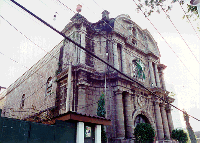
Like anywhere else in the world, the chinese have found a comfortable niche in Philippine society- and nowhere is this more apparent than in Chinatown. Situated in bustling Binondo, Chinatown is filled with with all things Chinese from Peking duck and Buddhist temples to gold watches, snake soup, and wonder herbs. The high chords of Chinese songs and the permeating smell of incense complete the uniquely Chinese ambiance. (NB The dragon dance is from Makati City:
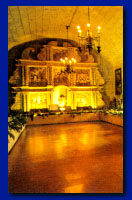
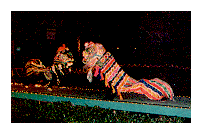
Chinese settled in Luzon earlier than the Spanish. The Philippine National Hero Dr. Jose Rizal had both Malay and Chinese blood. The former President Corazon Cojuangco Aquino has substantial Chinese blood - see Malaca鎙ng Palace.)
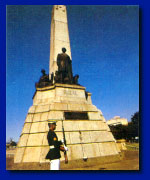
Kaleidoscopic jeepneys, cabs and buses ply the main routes, particularly the historic Epifanio de los Santos Avenue or simply EDSA, which cuts through the metropolis from north to Monumento or south to Baclaran. For inner city roads.
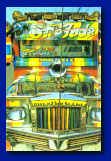
Some areas, like Binondo and Intramuros, still have those quaint little kalesas or hore-drawn carriages. The following photo is from the northern Vigan is site of the earliest Castillian settlements in the country. The town's old section showcases rows of 18th century adobe block houses patterned after the heavily-fortified Walled City of Intramuros, as well as local potteries, delicacies and handicrafts that are distinct by-products of Ilocos heritage.
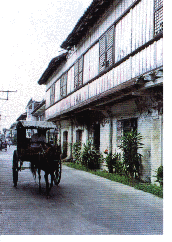
Source: http://www.dotpcvc.gov.ph and http://www.makati.gov.ph
This website is the 3rd draft designed and written for the HKUSU by Anthony C.H. CHUA 蔡誌慶, PhD Student in Law, HKU, and member of Trip001, on 10 March 2000 (then 26 March 2000, 8 Mar 2001) pending formal approvals from the Trip members and from HKUSU, and pending linkage/transfer to the HKUSU website. (please see acknowledgement section in FrontPage)